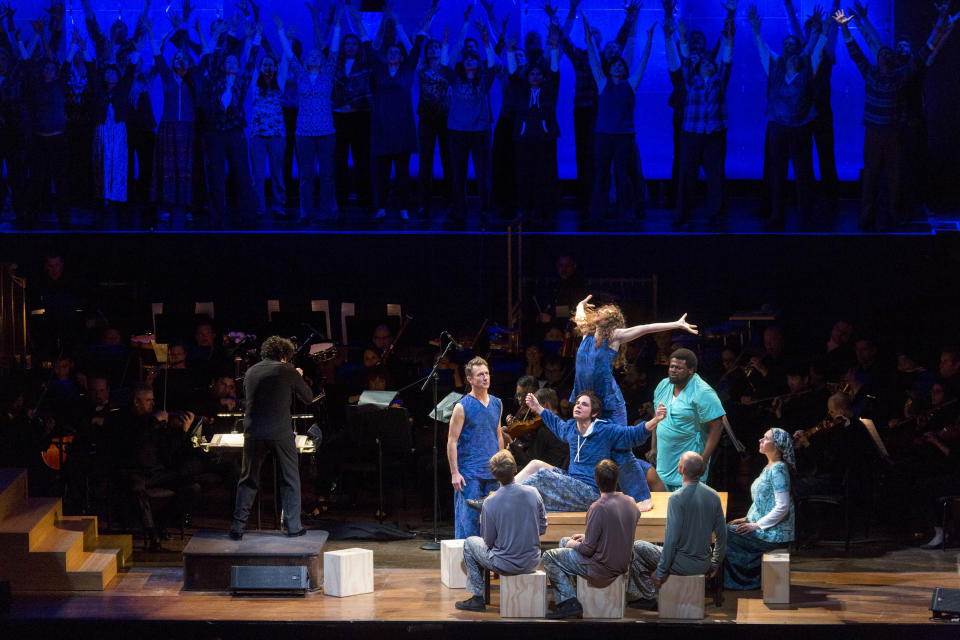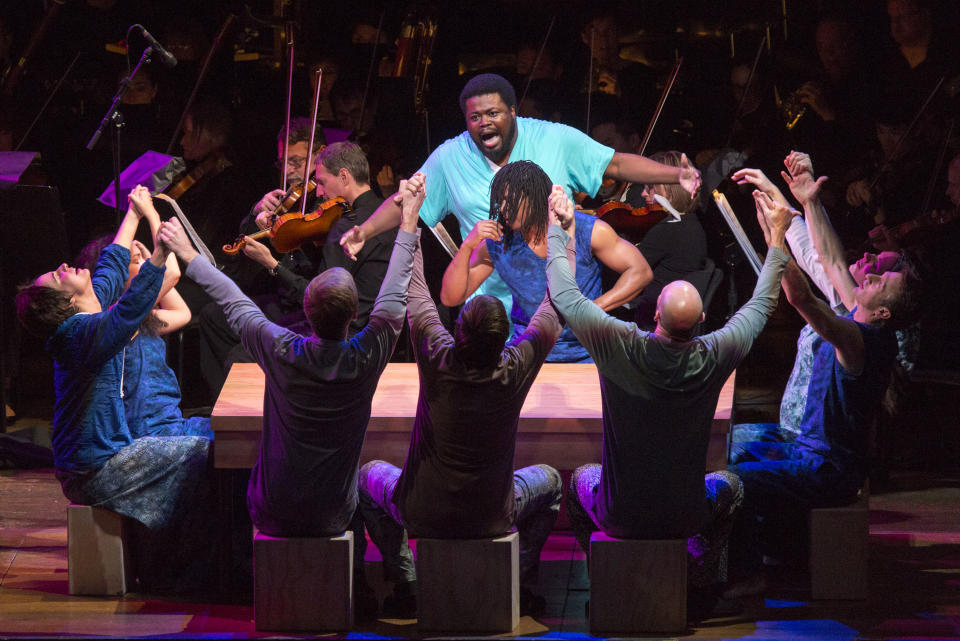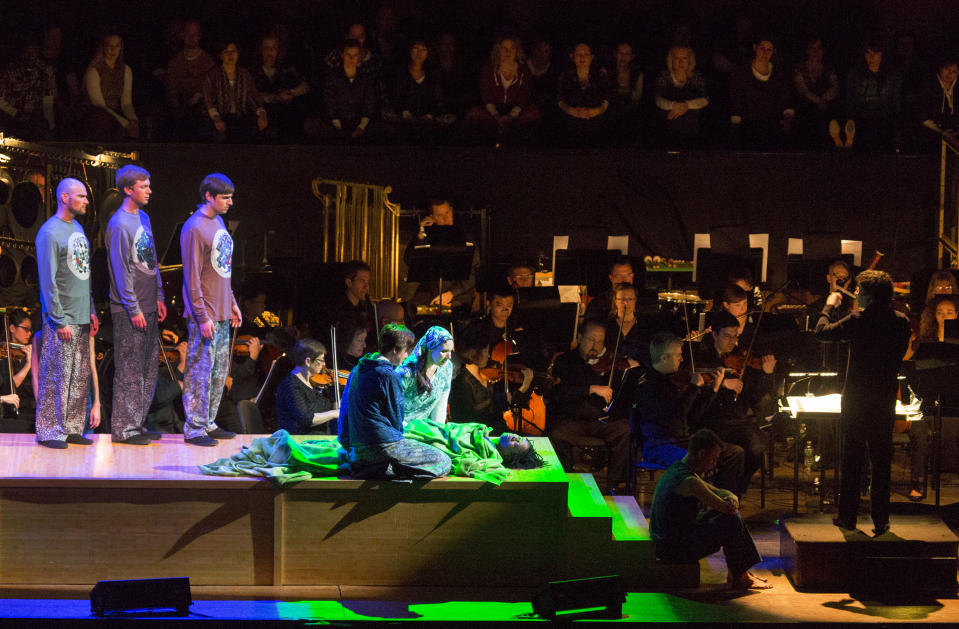John Adams' staged 'Gospel' has NY premiere
NEW YORK (AP) — The very title tells you this is no traditional version of the biblical story: "The Gospel According to the Other Mary."
And sure enough, the retelling of Christ's last days through the eyes of Mary Magdalene is interlaced with heavy doses of modern social activism in this stirring new oratorio, composed by John Adams to a libretto compiled by Peter Sellars from texts both ancient and contemporary.
The work had its East Coast premiere Wednesday night at Lincoln Center's Avery Fisher Hall in a performance by the Los Angeles Philharmonic, led by its music director Gustavo Dudamel.
First performed in Los Angeles 10 months ago, "Gospel" is written for three soloists — two mezzo-sopranos and a tenor — who take the parts of Mary Magdalene, her sister Martha, and their brother Lazarus. Three countertenors function as narrator, singing in gorgeous overlapping harmonies. There's also a chorus that comments on the action and at times becomes a participant.
The piece, a kind of sequel to the team's 2000 Nativity oratorio, "El Nino," is in two halves, the first recounting the raising of Lazarus from the dead, the second the crucifixion and resurrection of Jesus. Sellars tells the story through texts ranging from those by the 12th-century mystic Hildegard von Bingen to the 20th-century radical Catholic activist Dorothy Day, from poetry by Louise Erdrich and Rosario Castellanos to excerpts from the Old and News Testaments. References to drug addiction, battered women, shelters for the poor and farmworker protests pop up repeatedly amid the biblical story.
This effort to bridge 2,000 years of history works surprisingly well for the most part, though it occasionally seems more intellectually willed than artistically realized. And there are moments during the nearly three hours of playing time, including intermission, when judicious trimming might have been welcome.
But Adams enlivens the proceedings with some of his most adventurous music, by turns tenderly melodic and harshly dissonant. At one point, he uses the recorded sounds of frogs to introduce an Erdrich poem; a short while later, rumbling and crashing chords simulate an earthquake that dislodges the stone covering Jesus' tomb. He also makes heavy use of the cimbalom, a large box with metal strings that are struck with wooden hammers.
A high point of the evening is Adams' somber, soulful setting of the poem "Passover" by Holocaust survivor Primo Levi that closes Act 1. Its words sum up what Sellars is getting at in drawing parallels between past and present throughout the oratorio: "Each of us has been a slave in Egypt, has soaked straw with clay and sweat and crossed the sea with dry feet. ... This year in fear and shame, next year in strength and justice."
Crucially, since the premiere, Sellars has transformed "Gospel" into a fully staged work, set on two wooden platforms in front of the orchestra. There are a few props, like the blanket flooded with green light that covers the body of Lazarus as he slowly rises from the dead in a thrillingly suspenseful series of choreographed movements. Costumes are simple and colorful modern-day outfits. Colored lights play on the wall at the rear of the stage behind the chorus, reflecting the mood of the music.
But the most dramatic change is Sellars' incorporation of three dancers who interact with the soloists in amazing ways. Sometimes the dancers and singers mirror and amplify each other's movements; at other times their bodies intertwine, or the dancers seem to be manipulating the singers as if they were marionettes. Even the chorus joins in the action, at one point taking on the dual roles of farmworker and police who beat them during a demonstration.
These elaborate movements wouldn't work without the whole-hearted participation of the extraordinary singers. Both Kelley O'Connor as Mary and Tamara Mumford as Martha pour out their lines with fervent, ripe tone, frequently descending to the depths of a contralto's range. As Lazarus, Russell Thomas manages to sound both sweet and heroic at the same time.
There's terrific work as well by countertenors Daniel Bubeck, Brian Cummings and Nathan Medley, and by dancers Michael Schumacher, Anani Sanouvi and Troy Ogilvie. The Los Angeles Master Chorale, directed by Grant Gershon, sings with power and precision, and the orchestra under Dudamel plays the difficult score with wonderful spirit and grace.



